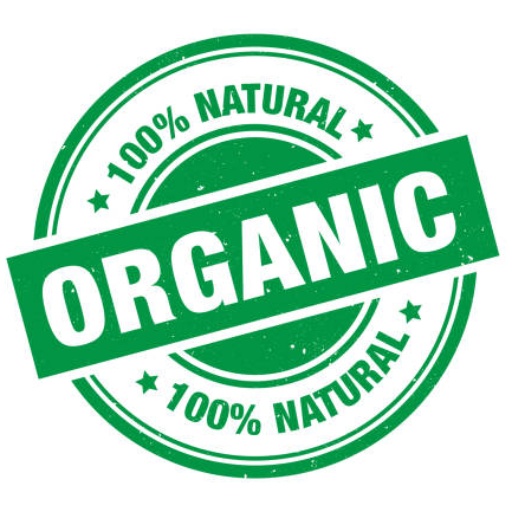Basics of Macronutrients: Carbs, Proteins, and Fats Explained

Macronutrients are the main nutrients your body needs to stay alive and work properly. There are three main types:
- Carbohydrates (Carbs)
- Proteins
- Fats
These are called macronutrients because your body needs them in large amounts. Each one has a job and gives your body energy. If you eat the right amounts of each, you will feel better, have more energy, and stay healthy.
As a nutritionist with over 15 years of experience, I’ve seen how understanding the basics can help people eat better without feeling confused. I’ve also seen how small changes in how we eat can improve our health.
What Are Macronutrients?
Macronutrients are the nutrients your body needs most. They give you energy and help your body work right. There are three types:
| Macronutrient | Job in the Body | Energy Provided (per gram) |
|---|---|---|
| Carbs | Give quick energy | 4 calories |
| Proteins | Build and fix body parts | 4 calories |
| Fats | Long-lasting energy, cushions | 9 calories |
You need all three every day. Even fat is important, even if people sometimes think it’s not good.
Carbohydrates: The Body’s Main Fuel
Carbohydrates are the body’s favorite energy source. When you eat carbs, your body turns them into glucose (a type of sugar) for energy.
Types of Carbs
There are two types of carbohydrates:
- Simple carbs: Found in sugar, candy, soda, and white bread. These give quick energy but don’t last long.
- Complex carbs: Found in whole grains, fruits, vegetables, and beans. These give slow and steady energy.
Why Carbs Matter
- They fuel your brain and muscles.
- They help your body store energy for later.
- They help your digestive system with fiber (in complex carbs).
My Advice
I once worked with a teenager who cut out all carbs, trying to lose weight. After a few weeks, she felt tired, had headaches, and couldn’t focus. When we added healthy carbs back into her meals, her energy came back.
Best Sources of Carbs
| Food Type | Examples |
|---|---|
| Whole Grains | Brown rice, oats, whole wheat |
| Fruits | Apples, bananas, berries |
| Vegetables | Sweet potatoes, carrots |
| Beans and Legumes | Lentils, chickpeas, black beans |
Proteins: Building Blocks of the Body
Proteins help build and repair body parts like muscles, skin, and hair. They are also needed to make enzymes and hormones.
Why Protein Is Important
- Helps children grow
- Builds and repairs muscle
- Supports the immune system
How Much Protein Do You Need?
Most people need about 0.8 grams of protein per kilogram of body weight. Athletes or people who are very active may need more.
Animal vs. Plant Protein
| Type | Examples | Notes |
|---|---|---|
| Animal | Meat, eggs, fish, dairy | Complete protein (has all amino acids) |
| Plant | Beans, tofu, nuts, quinoa | May need to mix different sources |
My Advice
I had a client who thought only meat gave enough protein. When he became vegetarian, he felt weak. I helped him learn how to combine beans, grains, and tofu to feel strong again.
Easy Protein Ideas
- Add eggs to breakfast.
- Snack on nuts or peanut butter.
- Use beans in soups or salads.
- Try tofu or tempeh in stir-fries.
Fats: Energy and Protection
Fats give long-lasting energy and help your body take in vitamins like A, D, E, and K. They also protect your organs and keep your body warm.
Types of Fats
| Type of Fat | Where It’s Found | Good or Bad? |
|---|---|---|
| Unsaturated Fats | Olive oil, nuts, avocado, fish | Good |
| Saturated Fats | Butter, cheese, red meat | Okay in small amounts |
| Trans Fats | Fried foods, packaged snacks | Bad, avoid them |
Why Healthy Fats Matter
- Help with brain function
- Keep skin and hair healthy
- Support hormone balance
My Advice
Years ago, people were told to eat low-fat everything. I saw many people skip nuts and avocados because they were afraid. But now we know that healthy fats are important. I always tell my clients to add a little healthy fat to each meal.
Healthy Fat Ideas
- Add avocado to toast or salad
- Cook with olive oil
- Snack on almonds or walnuts
- Eat fish like salmon twice a week
How to Balance Macronutrients in Meals
You don’t need to count every gram. Just aim to include all three macronutrients in each meal.
Simple Meal Plan Template
| Meal | Carbs | Protein | Fat |
|---|---|---|---|
| Breakfast | Oatmeal, fruit | Egg, Greek yogurt | Chia seeds, nut butter |
| Lunch | Brown rice, veggies | Chicken, tofu | Olive oil dressing, avocado |
| Dinner | Sweet potatoes, quinoa | Fish, beans | Nuts, olive oil |
| Snacks | Banana, whole grain toast | Boiled eggs, nuts | Nut butter, seeds |
Tips for Balance
- Fill half your plate with veggies.
- Add a source of protein (meat, beans, or eggs).
- Include a little fat (nuts, oil, avocado).
- Avoid eating only one type (like just bread).
Common Mistakes People Make
- Skipping fats: Thinking fat is always bad.
- Eating too much protein: More isn’t always better.
- Choosing only simple carbs: Like white bread or candy.
- Not eating enough fiber: Found in whole grains and veggies.
- Thinking one meal fixes everything: Your body needs balance every day.
Final Thoughts
Understanding carbs, proteins, and fats doesn’t need to be hard. Think of them as fuel, building tools, and protection. Your body needs all three. Eating a mix of them every day helps you stay healthy, grow strong, and feel your best.
As a nutrition expert, I always say: Don’t aim to be perfect—aim to be consistent. Focus on adding good things, not cutting everything out. Small, smart choices every day lead to better health for life.






